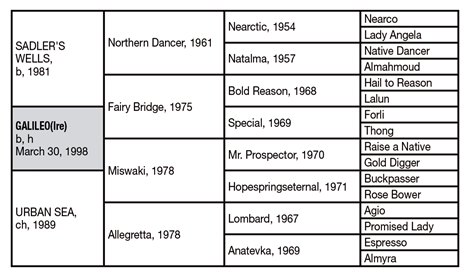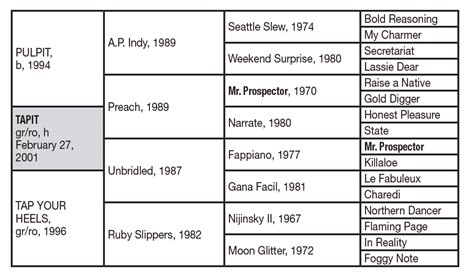When Tapit Met Galileo


Yes, things are definitely getting out of hand. It seems virtually every other new stakes winner in Europe is by Galileo, and on this side of the pond it is quite apparent that if you don’t have a Tapit, you are likely to be tapped out.
Some might suggest since he came along later than Galileo Tapit might be considered a bit of a flash in the pan, but we disagree. First, Tapit represents the dominant North American sire line of the 21st century so far, that of his grandsire A.P. Indy, through his sire Pulpit, whose dam was by the previous major dominant sire, Mr. Prospector. Secondly, Tapit has a plethora of recently retired sons, the first with foals to race showing promise—Tapizar and Hansen are in the top 10 of first-crop sires while Concord Point, a third-crop sire, is doing well, given his opportunities at the time he retired.
As for Galileo, his dominance is no doubt due to the mind-boggling influence his sire Sadler’s Wells exerted in perpetuating the Northern Dancer line in Europe. Of course, it doesn’t hurt that his dam, the extraordinary Urban Sea, was sired by Miswaki, a son of the previously mentioned Mr. Prospector. The Irish-based stallion is simply in another stratosphere when it comes to his ability to get first-class runners at all levels, and his sons have already come into prominence, having had a head start on those by Tapit, via New Approach, Teofilo, and now, Frankel.
Taking a journey into prognostication, we’ve hypothesized what might happen were mares by Galileo to meet up in the breeding shed with Tapit or his sons. Our method is based on biomechanics—measurable genetic physical attributes—that allow us to assemble a roster of Tapit and his sons (some of which are still racing) and match them in one of our programs that projects the probabilities of racing efficiency from specific matings.


There are two factors to disclose about this group of Galileo mares. First, they were not chosen for pedigree cross—they are fillies and mares selected from sales that caught our eye, or our clients either own or wished to purchase. Thus, their broodmare sires run the gamut from the Danzig line to those of Mill Reef, Nijinsky II, and Storm Cat. Secondly, based on the way we judge racing (not breeding) potential by letter grade, this book is extremely balanced—30% A or B+, 20% B, 20% C+ and 30% C—the likely makeup of most books of mares.
The test was conducted two ways: Each mare was tested against Tapit and his sons, as well as against all currently active sires in Kentucky, regardless of stud fee. If a mare returned an acceptable score with the Kentucky stallions (let’s say with 30% of them), we would be looking for the same percentage with the Tapit file. What we discovered was that, on average, the Tapit stallions doubled that minimal standard.
We also tested the Tapit group with a book of biomechanically balanced mares and dropped our jaws—the only thing we can say right now is that if half the results are proven out, this is a major sire line in the making. We then tested each Tapit stallion with the mares by Galileo. The results showed that the Tapit stallions consistently projected good matches with mares that have C+ or better biomechanical profiles, regardless of the mare’s broodmare sire.
Thus, if there is to be a nick, it might be more the result of physique than pedigree, but if the racing results follow our projections, this could be wild.
